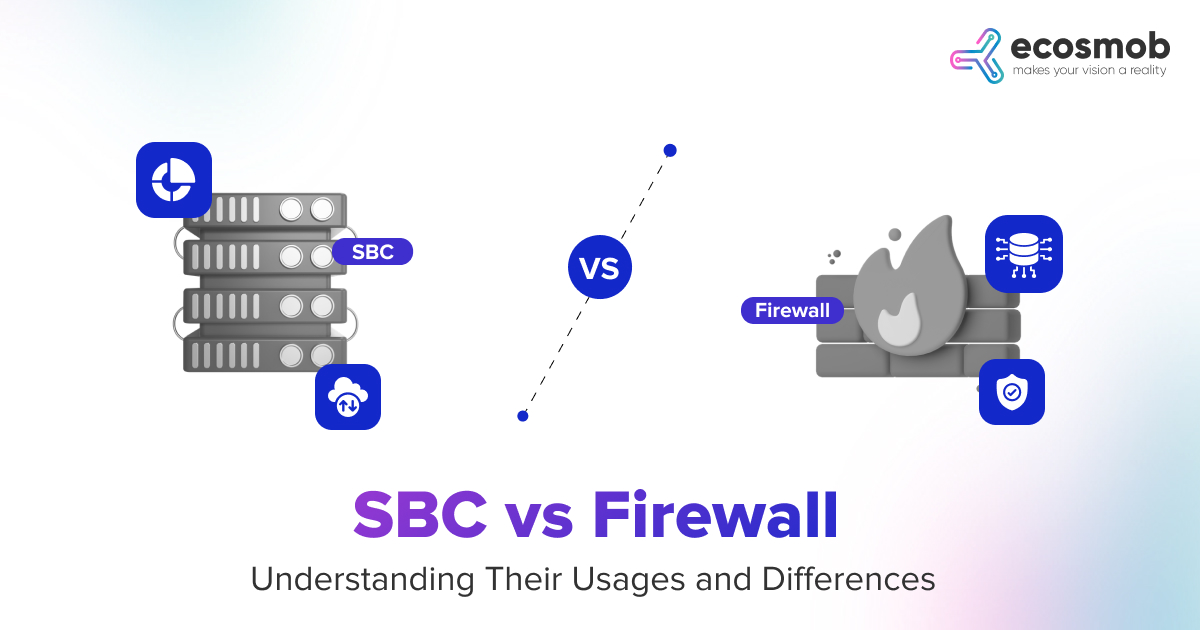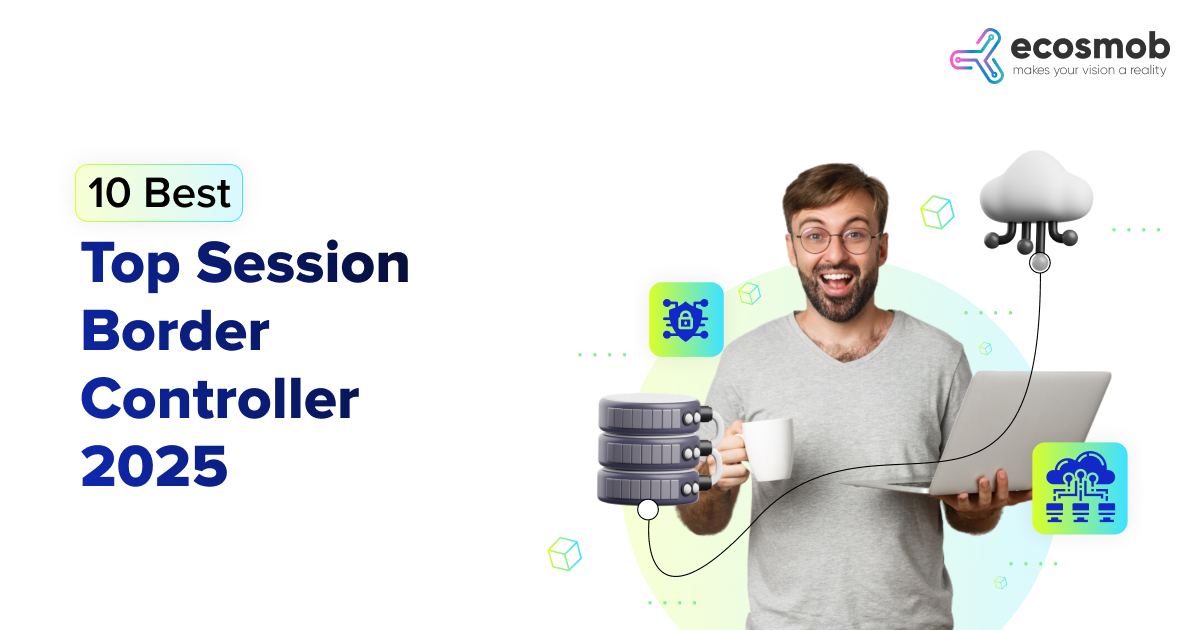QUICK SUMMARY
In this blog, learn why NAT traversal is important for smooth VoIP communication. Explore the challenges it creates and how SBCs help ensure clear calls, easy connections, and good network performance so your VoIP system works perfectly.
VoIP, or Voice over Internet Protocol, has become an integral tool in today’s unpredictable online marketplace where uninterrupted communication is essential. However, figuring out VoIP networks’ intricacies can take time and effort, mainly when fixing recurring problems like dropped calls, poor audio quality, and compatibility concerns. One of the most common issues in VoIP calls is Network Address Translation (NAT) traversal, which can cause significant disruptions. Fortunately, Session Border Controllers (SBCs) offer a reliable solution to overcome these challenges. Session Border Controllers are pivotal in enhancing connectivity and ensuring secure and efficient communication flows within VoIP networks.
This in-depth exploration will discuss how NAT traversal SBCs facilitate seamless network communication, focusing on addressing NAT traversal challenges and ensuring interoperability among diverse VoIP protocols and Codecs.
Solve VoIP NAT Challenges with Ecosmob’s Expert SBC Solutions
What is NAT Traversal in VoIP Networks?
Before proceeding, let’s understand NAT traversal. Simply, NAT is a method routers use to allow multiple devices on a private network to share a single public IP address. However, NAT poses significant challenges in VoIP environments because it can prevent direct peer-to-peer network communications. Devices behind NAT may need help establishing and maintaining connections, leading to dropped calls and poor quality of service. NAT traversal techniques prove their importance by opening communication pathways that NAT policies would otherwise block.
How NAT Traversal Works in VoIP?
NAT traversal in VoIP is a crucial process that allows VoIP phones or devices on a private network to communicate with those on a public network, even when they are behind a Network Address Translator (NAT).
VoIP relies on real-time, two-way communication. However, NAT can interfere by blocking incoming connections, as it doesn’t know which device on the private network to direct the incoming call to.
To overcome this, VoIP systems employ various NAT traversal techniques. Here’s a breakdown of how it works:
1. STUN (Session Traversal Utilities for NAT)
STUN helps VoIP devices discover their public IP address and the type of NAT they are behind. This information is then used to establish connections with other devices. Imagine STUN as a scout that finds out your location on the public internet, even if you’re hidden behind a wall (NAT).
2. TURN (Traversal Using Relays around NAT)
TURN uses a relay server to forward VoIP traffic between devices. This is particularly useful when NATs are more restrictive and block direct connections. Think of TURN as a messenger who carries your messages back and forth when you can’t directly communicate with the other person.
3. ICE (Interactive Connectivity Establishment)
ICE combines STUN and TURN to provide a comprehensive NAT traversal solution. It tries direct connections first using STUN and falls back to TURN if necessary.ICE is like having both a scout and a messenger at your disposal, choosing the best way to communicate depending on the situation.
4. SIP ALG (Application Layer Gateway)
Some routers have a built-in SIP ALG that understands the SIP protocol used by VoIP. It can modify SIP messages to include the correct IP addresses and ports, helping to establish connections. SIP ALG is like a translator within the router that ensures the VoIP messages are correctly understood and delivered.
NAT traversal is essential for VoIP to function effectively in today’s networks. Using techniques like STUN, TURN, ICE, and SIP ALG, VoIP devices can overcome the challenges posed by NAT and establish reliable, high-quality communication.
The Crucial Role of SBC in VoIP NAT Traversal
SBCs are deployed on the edges of networks to regulate IP traffic flowing in and out of the network. Traversal SBC handling involves managing and modifying the IP traffic to cope effectively with NAT issues. SBCs perform packet inspection header modifications and employ various signaling and media handling techniques to maintain call continuity and quality. This makes them indispensable in environments where NAT configurations could otherwise lead to communication failures.
SBCs use various techniques to handle NAT traversal, including
- NAT type detection: SBCs can detect the type of NAT device used (e.g., full cone, restricted cone, port-restricted cone, or symmetric) and adjust their behavior accordingly.
- Firewall traversal: SBCs can open and close ports dynamically to allow VoIP traffic to pass through firewalls without compromising security.
- Codec transcoding: SBCs can perform codec transcoding to ensure compatibility between different VoIP endpoints, even if they use different codecs.
- Signaling and media handling: SBCs manage both the signaling (e.g., SIP) and media (e.g., RTP) aspects of VoIP communication, ensuring that both can traverse NAT devices successfully.
 By ensuring seamless address translation, SBCs play an indispensable role in the robust deployment of VoIP solutions.
By ensuring seamless address translation, SBCs play an indispensable role in the robust deployment of VoIP solutions.
SBCs and Their Impact on Codec Transcoding
Codec transcoding is another critical function of SBCs. It refers to converting audio streams from one Codec format to another during a voice call. It is essential when two communicating devices use different audio Codecs, which can often be incompatible without intervention. Here are some of the factors affecting SBCs on Codec Transcoding:
- Codec Compatibility: Session Border Controllers ensure that devices using different Codecs can communicate with each other by dynamically converting audio streams from one Codec to another. It means that an SBC can receive a voice stream in one Codec format, convert it to another Codec format required by the receiving device, and ensure seamless communication.
- Maintaining Call Quality: SBCs maintain the highest possible audio quality during transcoding. It involves complex algorithms that minimize audio quality loss despite compression and decompression during the Codec conversion process.
- Resource Management: Transcoding is a resource-intensive process. SBCs manage the allocation of necessary computational resources to handle transcoding efficiently, ensuring that the VoIP network can support multiple concurrent transcoding sessions without degrading overall network performance.
- Latency Reduction: By performing Codec transcoding, SBCs help reduce latency when packets get delayed due to incompatibility issues between different Codecs. It is vital for maintaining the real-time nature of voice communications.
- Scalability and Flexibility: SBCs can handle multiple Codec formats, providing scalability and flexibility to VoIP networks. This capability allows businesses to expand their communication systems to include a broader range of devices and services without worrying about Codec compatibility issues.
- Interoperability Enhancement: In addition to facilitating communication between different Codecs, SBCs enhance interoperability between VoIP protocols and network setups. This broader role helps create a more robust and versatile communication infrastructure.
By managing Codec transcoding, SBCs address one of the core challenges in VoIP communication—ensuring that the diverse array of devices and networks can connect and communicate clearly and effectively. This capability is crucial for modern VoIP systems’ global reach and adaptability.
Enhancing Protocol Interoperability with Codec Transcoding
Interoperability is another significant area where SBCs demonstrate their value. VoIP networks often involve a variety of VoIP Codecs and VoIP protocols, each with its specifications and capabilities. SBCs handle Codec transcoding by converting audio data from one Codec format to another, enabling seamless communication between devices that operate on different Codecs.
Beyond Codec transcoding, SBCs also enhance interoperability through comprehensive protocol support. VoIP networks can operate on multiple protocols, such as SIP, H.323, and MGCP. SBCs serve as protocol mediators, enabling seamless communication between devices using different VoIP protocols. They normalize and translate protocol-specific nuances, handle registrations, and route calls across network boundaries. This capability is essential for maintaining robust communication ecosystems that are protocol-agnostic.
Addressing VoIP NAT Traversal Issues and Solutions
VoIP NAT traversal issues and solutions are at the core of what SBCs are designed to address. To overcome the limitations imposed by NAT, they implement advanced techniques like STUN (Session Traversal Utilities for NAT), TURN (Traversal Using Relays around NAT), and ICE (Interactive Connectivity Establishment).
STUN is an essential protocol that allows clients behind a NAT to discover their public address and the type of NAT they are behind. When direct connection setups fail due to the type or configuration of NAT, you can use TURN. In addition, ICE is a comprehensive framework for optimizing the media path selection process. It combines ST and TURN methodologies to provide a robust solution for achieving the best possible connectivity between endpoints. ICE gathers all potential candidates (local IP addresses, reflected addresses discovered via STUN, and relayed addresses provided by TURN) for sending and receiving media.
Together, these technologies ensure that SBCs can effectively address VoIP NAT traversal issues by discovering and maintaining the best paths for media setup. This capability is critical in supporting high-quality, uninterrupted VoIP communications across diverse and complex network environments. By implementing these solutions, SBCs play a pivotal role in ensuring robust connectivity and overcoming the inherent limitations of NAT that can otherwise disrupt VoIP services.
Troubleshooting VoIP Network Issues
When dealing with VoIP network issues, it’s essential to have a solid understanding of the underlying protocols and technologies involved. Here are some common VoIP network issues and how SBC NAT traversal can help resolve them:
- Dropped Calls: If calls are frequently dropped, it could be due to issues with NAT traversal. SBCs can help by detecting the type of NAT device and using appropriate techniques to maintain the connection.
- Poor Audio Quality: Poor audio quality can be caused by various factors, such as network congestion, packet loss, or codec incompatibility. SBCs can help by performing codec transcoding and optimizing the media path to ensure better audio quality.
- Firewall Issues: If not appropriately configured, firewalls can block VoIP traffic. SBCs can help by dynamically opening and closing ports to allow VoIP traffic to pass without compromising security.
- Compatibility Issues: Communication failures can occur if different VoIP endpoints use incompatible codecs or protocols. SBCs can help by performing codec transcoding and ensuring compatibility between different VoIP endpoints.
Businesses can ensure high-quality communication and avoid potential disruptions by addressing these common VoIP network issues with the appropriate solutions. Regular monitoring and maintenance of the network are essential to prevent these issues from arising.
The Future of SBCs in VoIP Networks
As VoIP technology evolves and new challenges emerge, we expect the role of SBCs to expand even further. Future developments might include:
- Enhanced security features.
- Deeper integration with cloud services.
- More sophisticated AI-driven management tools to automate and optimize network operations.
The continuing innovation in SBC technology will be vital in keeping up with the increasing demands of VoIP communications.
In summary, in today’s VoIP communications world, Session Border Controllers (SBCs) are essential. They help solve issues like network address translation (NAT) problems, codec compatibility, and different protocol interactions. SBCs ensure smooth connections, improve call quality, and improve network security, allowing businesses to communicate reliably in various settings.
As VoIP technology grows, SBCs will become even more important. They will drive new advancements and shape global communication’s future. By investing in strong SBC solutions now, you can build better, more resilient VoIP networks for the future.
We at Ecosmob Technologies specialize in delivering cutting-edge SBC solutions And optimizing VoIP network performance and scalability. Our customized configurations help businesses overcome today’s VoIP challenges while ensuring they’re ready for future demands.
Contact us today.
Make your VoIP communication secure and easy with Ecosmob’s SBCs.
FAQs
What is NAT in VoIP?
NAT (Network Address Translation) in VoIP allows multiple devices on a private network to share a single public IP address, enabling internet communication.
Which port is used for NAT traversal?
NAT traversal in VoIP typically uses ports 5060 (SIP) and 10000-20000 (RTP) for media transmission.
What is NAT used for?
NAT maps private IP addresses to public IP addresses, allowing devices in a private network to access the Internet.
What are the two types of NAT?
The two types of NAT are Static NAT, which maps one private IP to one public IP, and Dynamic NAT, which maps multiple private IPs to one public IP.
Is NAT a firewall?
No, NAT is not a firewall, but it adds a layer of security by hiding private IP addresses from external networks.









![SIP Protocol [SIP Signalling]](https://a4f8b050.delivery.rocketcdn.me/wp-content/uploads/2024/12/Blog-79.jpg)







